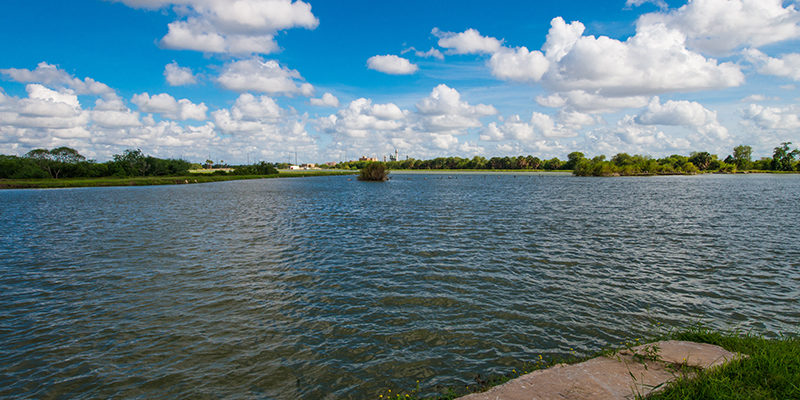Setting the Stages for Conservation
Hot conditions and drought aren’t unfamiliar things for those of us living in South Texas. In fact, it’s something that we largely deal with on a year-round basis; however, those dry conditions tend to intensify during the dog days of summer that we find ourselves in today.
You might wonder how BPUB determines drought status and what it does to mitigate that. Severe drought in the 1980s prompted BPUB to adopt its first emergency water conservation plan in 1986. It has been revised as needed over the years to keep things up to date, but this is the basis for BPUB’s drought mitigation efforts. The purpose of the emergency water conservation plan is to minimize the adverse impacts of water supply shortages or other emergencies and to manage the available water resources as efficiently as possible. It applies to all people, customers and properties using BPUB’s water.
This plan is broken up into stages that are initiated and terminated by BPUB’s general manager/CEO and the Brownsville mayor. Every May 1, BPUB automatically begins stage 1 of this drought plan. With this stage, there are no mandatory restrictions of any kind, but the community is encouraged to voluntarily conserve water however possible.
Each subsequent stage, going up to stage 4, gives BPUB and the mayor the power to initiate water use restrictions. As you can imagine, the higher the stages go, the more stringent restrictions become. This may cause you to wonder how BPUB determines when a stage is necessary. That’s a good question and one that gives a better idea of how the area determines drought conditions.
Water conservation stages are triggered based on the amount of water contained in the Amistad and Falcon reservoirs. This is where our main source of drinking water comes from. When it’s full, there are no fears of supply, but as water levels get lower and lower, water utilities need to work with its customers to ensure there will be enough water for everybody.
Because of where these reservoirs are located, local rain doesn’t do much to alleviate drought conditions for BPUB. While local rain does help some, with people not watering their lawns and farmers not needing to irrigate, it doesn’t put water back into the reservoirs. That rain needs to occur further west of Brownsville, around where these reservoirs are located, to increase the drinking water supply and reduce drought conditions for this area.
So now that you understand where the drinking water comes from, it becomes easier to understand how stages are determined in the drought plan. For instance, stage 1 occurs every May 1, but it can also be initiated when the U.S. water stored in the reservoirs reaches 51 percent or below. Stage 2 is triggered with water levels at 25 percent and stage 3 when at 15 percent. Stage 4 would be considered a water shortage emergency.
The purpose of this plan is really to try to make sure that anything beyond stage 1 isn’t necessary, but to make that happen, we need the cooperation of all of our customers. Cooperation and doing little things every day to reduce water use go a long way to ensuring that restrictions on water use won’t be necessary. It has been many years since BPUB has had to go into stage 2 or beyond of the water conservation plan, and that is because of careful planning by BPUB and responsible water usage by the community.
Here are some ways that you can conserve water this summer:
- Avoid the heat when watering. Try to only water or irrigate your yard before 7 a.m. or after 7 p.m. This takes irrigating outside the hottest hours of the day. That means you will lose less water to evaporation, and that also means you’ll use less water and that the water that is used will be better able to absorb into the soil.
- Irrigate landscaped areas with a hand-held garden hose, soaker hose, hand-held bucket or water can, hose-end sprinkler, irrigation system, computer-controlled irrigation system or drip irrigation system to reduce waste.
- Reduce or discontinue water use for non-essential purposes such as washing paved areas or other hard-surfaced areas except to alleviate public safety and/or health hazards.
Stay tuned to BPUB’s website and social media channels to know more about your city’s drought conditions and to learn more ways to reduce water use.

